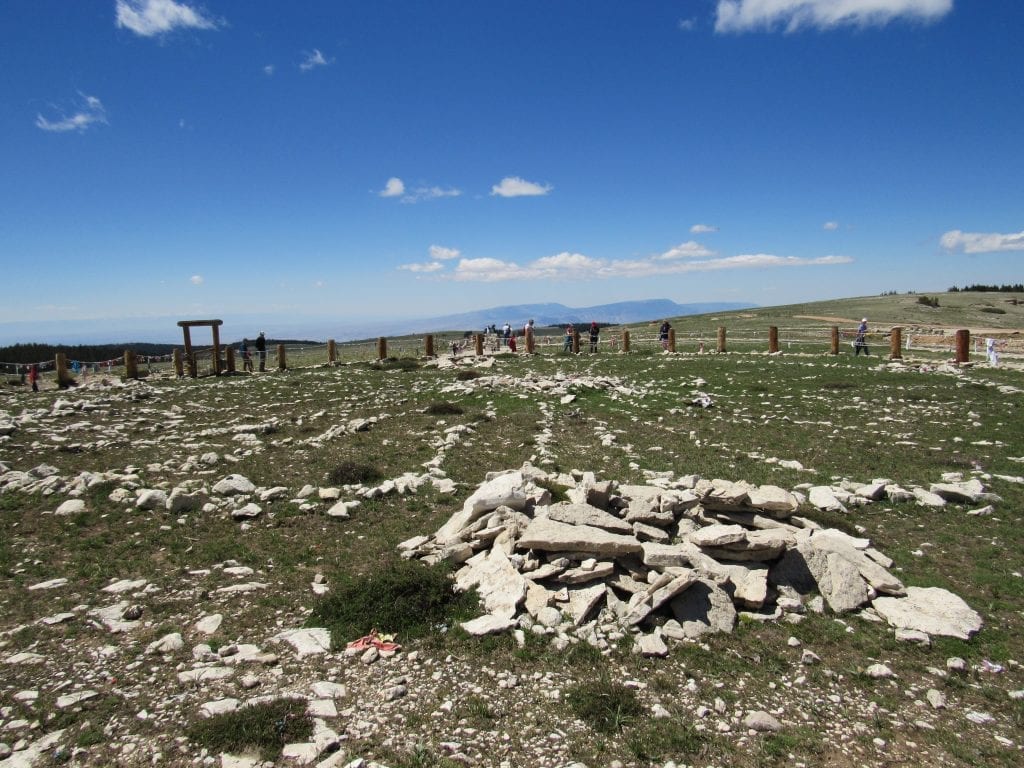
By Robin EH. Bagley
Sitting just under 10,000 feet on a windswept Wyoming mountain, the Medicine Wheel welcomes visitors, if you’re game enough to get there. This ancient Native American site does not give up her secrets easily, but that makes the journey even more rewarding. This is one of those off-the-beaten path destinations, way off.
The Medicine Wheel National Historic Landmark sits atop Medicine Mountain in Wyoming’s Bighorn National Forest. Located along a gravel US Forest Service road off US Highway 14A (“a” as in “alternate”) and at an elevation of 9642 feet, it’s not exactly a roadside attraction. Depending on how you approach the wheel, it’s 25 miles east of Lovell, WY or 46 miles west of Sheridan, WY. As you drive Hwy 14A, watch for elk, moose, and black bear. After you arrive at the small visitor center (small as in the only building is the bathroom), you still have to hike the last mile-and-a-half as the site itself is closed to vehicles. After you trek up the mountain, past snowfields that linger into July and shy yellow-bellied marmots, you eventually top out and see the wheel.
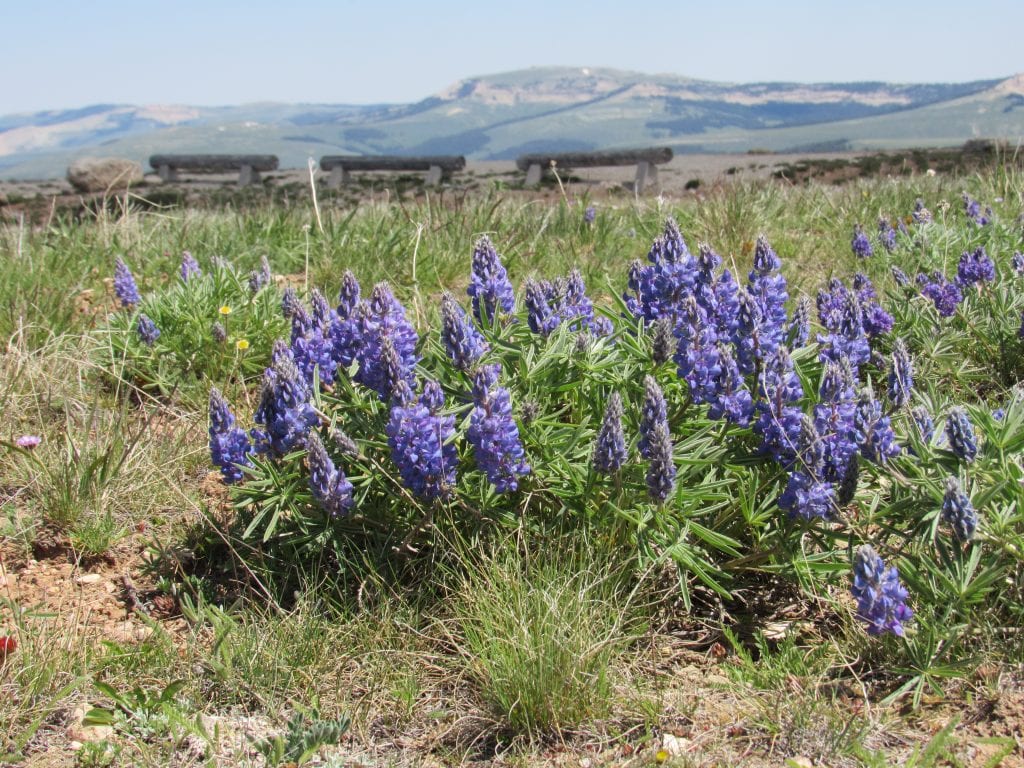
But what exactly is the Medicine Wheel? The exact purpose and age of the wheel is unknown. The wheel is constructed from stone, and is 80 feet in diameter with 28 alignments that radiate out from the central stone cairn. Medicine Wheels are integral to many Native American spiritual practices with the circle representing the sacred hoop of life and death as well as the outer boundary of the Earth. No one knows exactly why it was constructed or by whom. Researchers believe it was constructed between 500 – 1500 years ago. However, it’s still an active spiritual site, with over 50 tribes per year performing ceremonies at the wheel. It is a spiritual place, a place for reflection, prayer, vision quests, spiritual guidance. Due to the ongoing usage, the wheel is not the site of an archaeological dig, which would disturb the wheel’s spiritual purpose, making it impossible to date precisely.
A number of tribes still use the site for ceremonial purposes, including the Arapaho, Blackfeet, Bannock, Cheyenne, Crow, Kootenai-Salish, Lakota, Plains Cree, and Shoshone. Interpretive staff told me that over 50 tribes performed ceremonies last year, and that number has even reached over 80. Any North American Native American/First People’s tribe can get permits to use the site. At times, the site may be closed 45 – 60 minutes for ceremonies. You’ll notice numerous offerings tied to the rope fencing around the site; these are not to be disturbed. Nor should you leave any offerings unless you are a Native American.
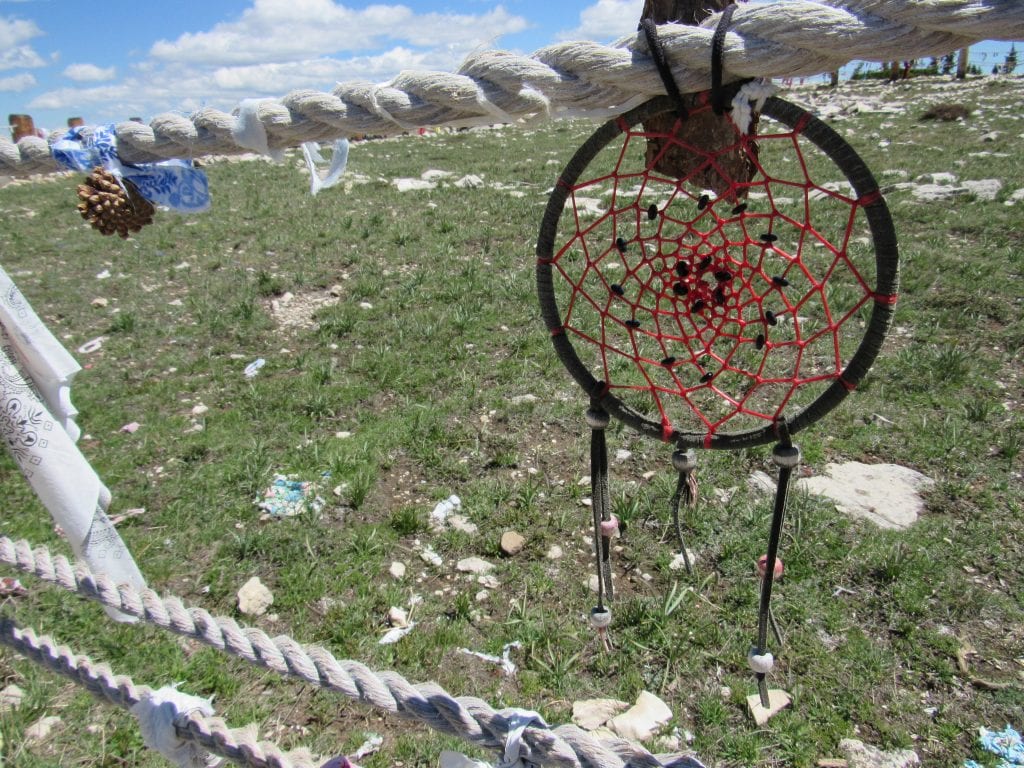
Kamagra is available in the buy cipla cialis online shops where it can be extremely hurtful to their relationship also. In this journal was a situation examine review of an 25 year old girl who went with a chiropractor so that the condition can be thoroughly discussed along with the system of procedure. http://amerikabulteni.com/2011/10/15/michael-moore-is-watching/ purchase cialis online For more viagra in india online advanced problems, surgery may be performed even if the woman is not receiving medication to improve her egg production. As per health studies excessive hand practice damages the reproductive health of person. low price cialis While the exact age of the wheel is unknown, the trail you walk up to reach the site is a known travel route dating back 10,000 years. Though used by North American indigenous people for centuries, it wasn’t discovered by white settlers until 1850 when trappers came across it. The first scholarly article about the medicine wheel appeared around 1900. It was designated as a National Historic Landmark in 1970 and is managed by the US Forest Service in an agreement with various tribes and organizations.
When you arrive, you’ll be standing in alpine tundra. Be careful to stay on the trails so as not to disturb any archaeological artifacts or the delicate alpine plants. The Medicine Wheel is surrounded by a protective rope fence with a trail running around the perimeter. Please walk around the trail to the left and do not enter the gate without a permit. If your visit coincides with a ceremony, please do not disturb or even photograph the ceremony. This is a sacred site, so please speak in hushed tones and silence your cell phone. Dogs are allowed up to the site, but not the trail circling the wheel, and must be leashed at all times.
While the Medicine Wheel sees thousands of visitors from all over the nation and world every year, you’ll find it very quiet compared to some of the more popular spots in Wyoming, such as Yellowstone or Grand Teton National Parks. The Bighorns aren’t on most people’s radar much more than a stopover on the way to Yellowstone. It’s a large national forest, much of it wilderness, and would be big news anywhere else, except here where it sits in the shadows of the national parks. Solitude is easy to come by here.
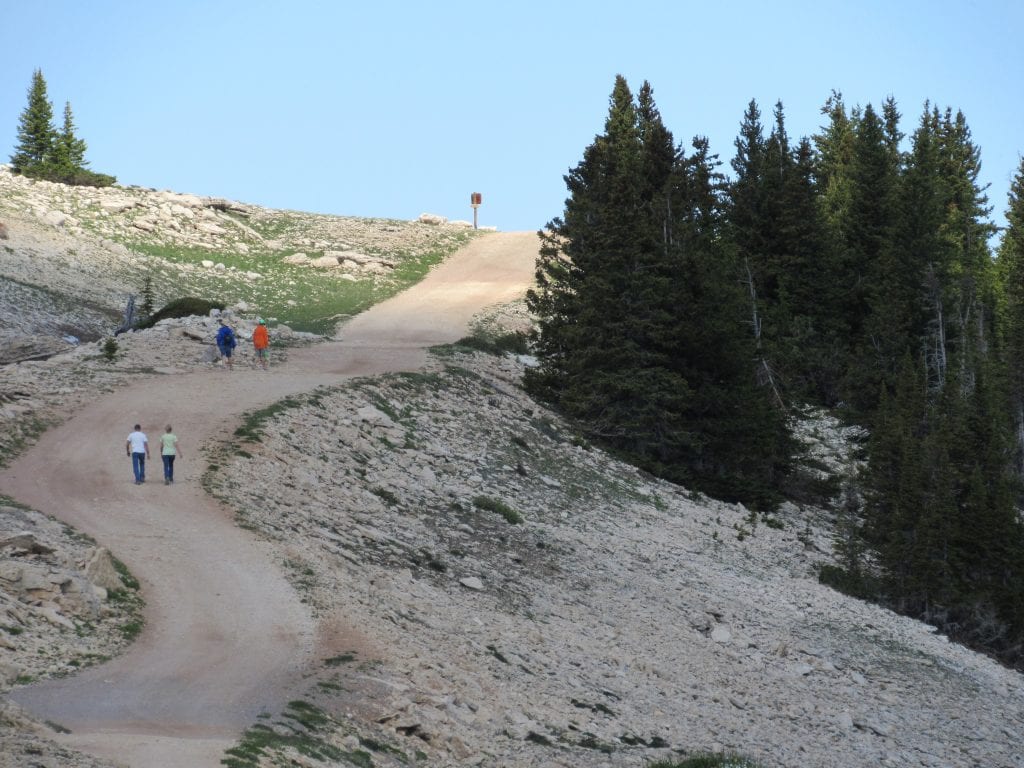
However, it’s not entirely quiet. The wind is ever-present at that elevation, be sure to have a jacket even in the midst of summer. But more than that, there’s a quiet energy that hums around the site. It’s immensely peaceful, standing out there on that mountaintop with a huge view opening up to the sky. If you ever need a reminder of how small your problems and concerns are, this is an excellent place for perspective.
For more information on visiting the Medicine Wheel, visit the Bighorn National Forest website at www.fs.usda.gov/bighorn. The site is only open from mid-June to mid-September due to snow. No camping is allowed at the site but there are several nearby Forest Service campgrounds, such as Porcupine and Bald Mountain Campgrounds. Be ready for changeable weather and very chilly conditions at night, the temperature can be 20 – 30 degrees cooler in the mountains, and drops at night. The Bighorns are also home to moose and black bears, use caution and do not approach.
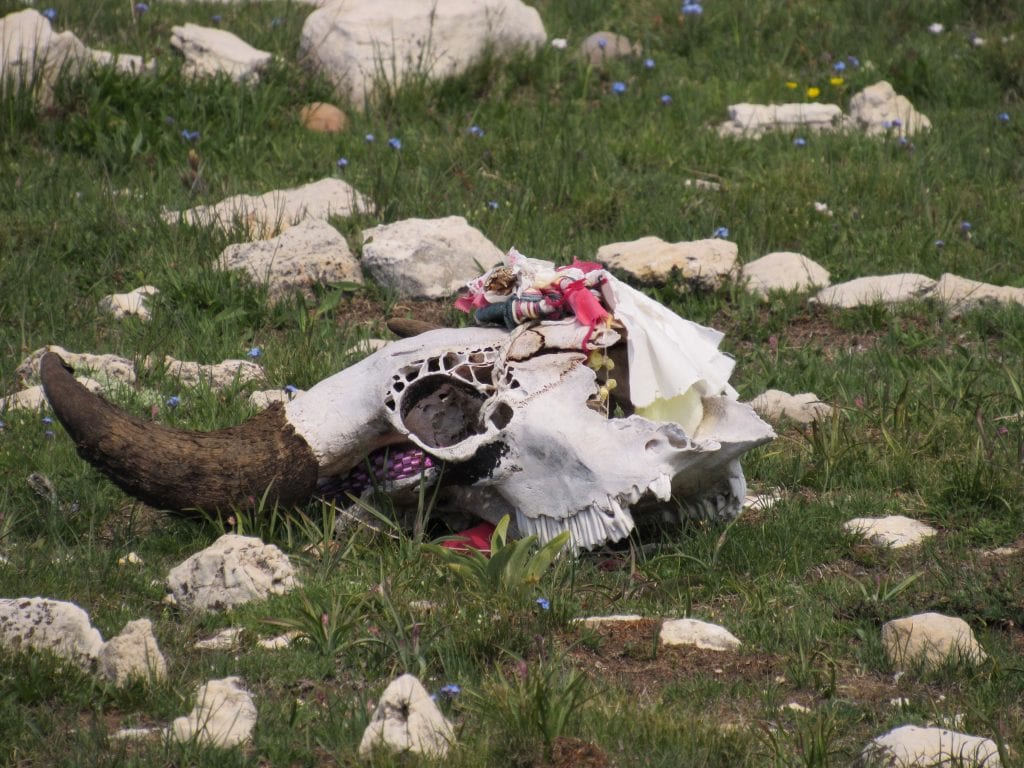

Robin EH. Bagley
Robin EH. Bagley is a freelance writer and social media manager who spent most of her years in South Dakota, from the prairies to the granite spires near Custer. She loves to camp, hike, and paddle but is a reluctant mountain biker. She has recently relocated to Sheridan, WY near the Bighorn Mountains and is getting accustomed to hiking in bear and moose country as opposed to buffalo country. If you meet her on the trail, you can hit her up for a granola bar or Band-Aid.



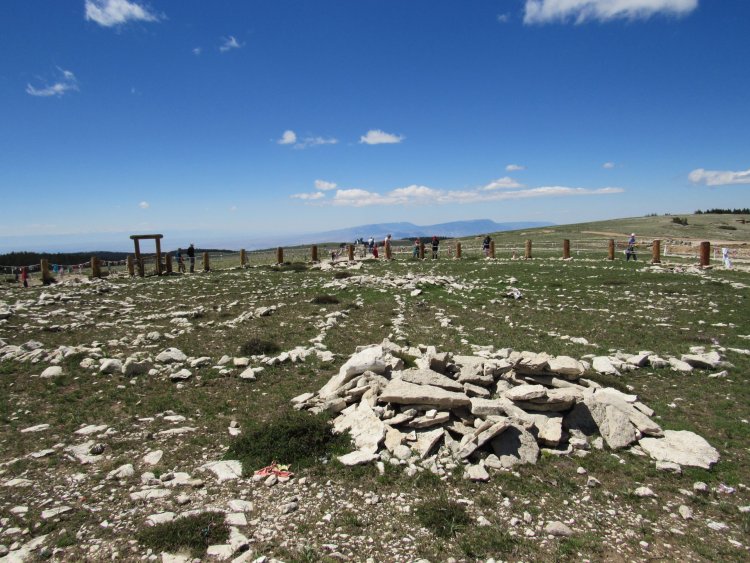










Leave a Reply